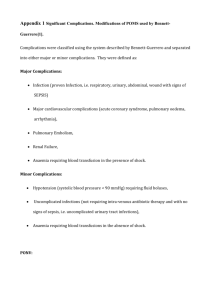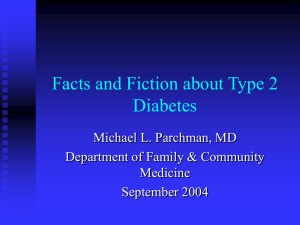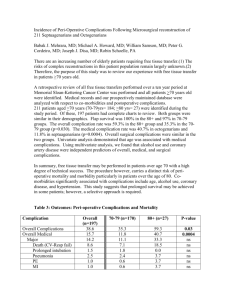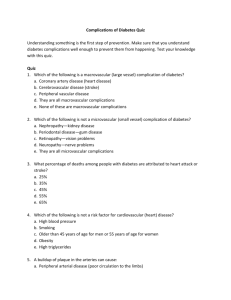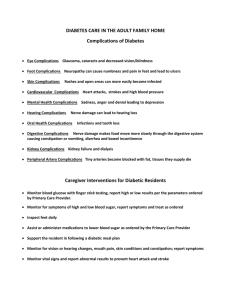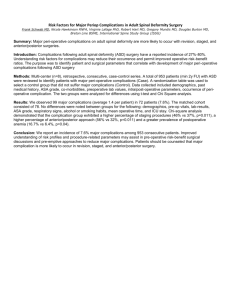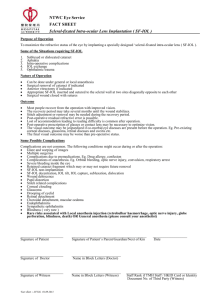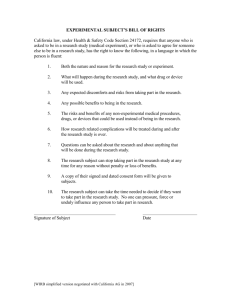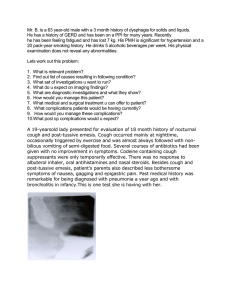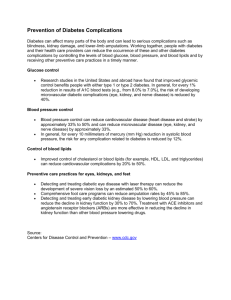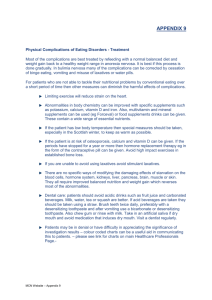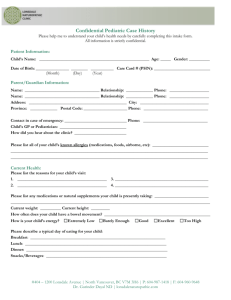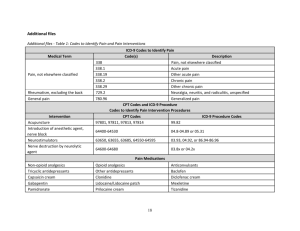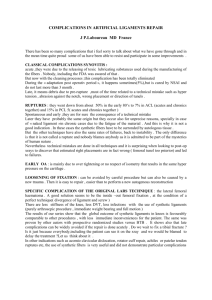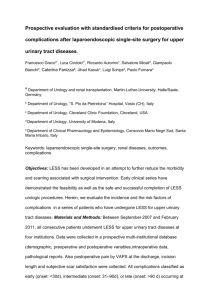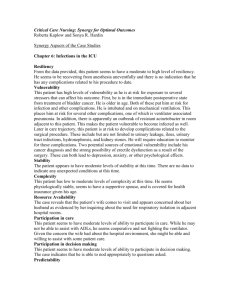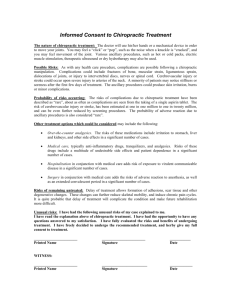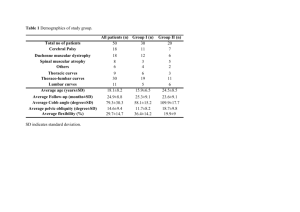risk factor profile and control in type 2 diabetes at knh
advertisement
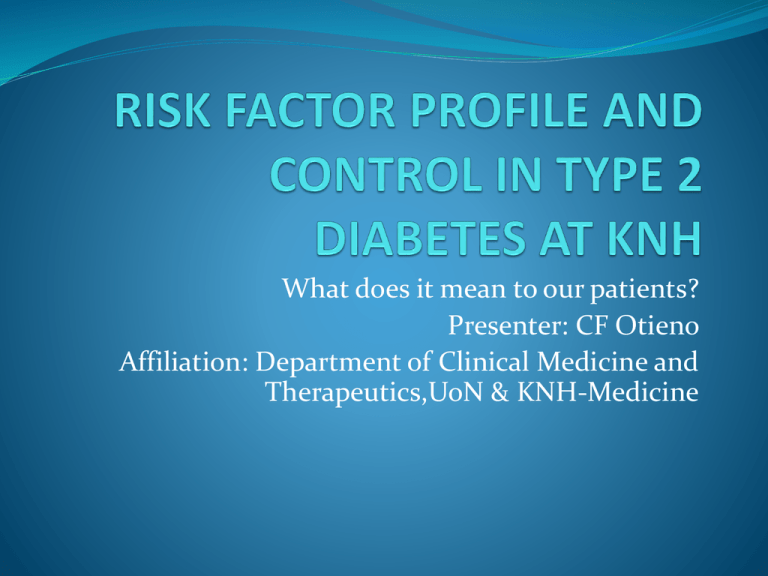
What does it mean to our patients? Presenter: CF Otieno Affiliation: Department of Clinical Medicine and Therapeutics,UoN & KNH-Medicine TYPE 2 DIABETES Progressive disease Well characterized . . . But-poorly controlled Broad treatment goals:- glycaemia,BP,LDL,Weight,Knowledge,Self management,HRQoL etc RISK FACTORS OF COMPLICATIONS Microvascular Hyperglycaemia Genetics (Hypertension) Macrovascular Lipids Hypertension Genetics Age COMPLICATION PROFILES AT KNH Microvascular Eye Neuropathy Nephropathy • Microalbuminuria • Macroalbuminuria • ESRD MACROVASCULAR COMPLICATIONS Cerebrovascular disease (Mwazo) Myocardial infarction (Nguchu) (STEMI/NSTEMI) Erectile dysfunction (Ngalyuka) COMPOSITE COMPLICATIONS Renal disease Diabetic foot ulcer, 7.8%: (Diabetes) – Risk factors (The patient) – Knowledge, Attitude, Practice (The health unit) – Policy Foot-at-risk>33% (Mugambi E, et al) RISK FACTOR PROFILE AT KNH Glycaemic control: <40% good control BP control – only 50% known HTN, out of these only 25% well controlled. Lipids - high LDL Adherence to treatment – POOR REASONS FOR POOR CONTROL Provider factors: Knowledge, Attitude, Practices, etc System factors Policies, Medication access, Insulin access Patient factors Knowledge, Attitude, Practices, Socio-Economic Status Heterogeneous disease CONSEQUENCES OF POOR CONTROL Enhanced complications ( at early age) Renal Cardiac Stroke Attenuated HRQoL Health resource consumption-hospitalization; dependance. CAN WE STEM THE TIDE? Access to care: Policies Physical Quality of care and evaluation Clinical end-points Administrative end-points Risk stratification of patients? Address fatigue of care providers? AREAS TO ADDRESS Health system adjustment: patient-focused decision- making Generate evidence:-longitudinal studies for outcomes; RCTs etc. Cost-related studies-effectiveness and benefit analysis MORTALITY reviews In conclusion, . . We need to ask ourselves: Can we tell whether our patients are better off NOW than thirty years ago ? OR What ails our patients? What does the care we give mean to them ? THANK YOU

